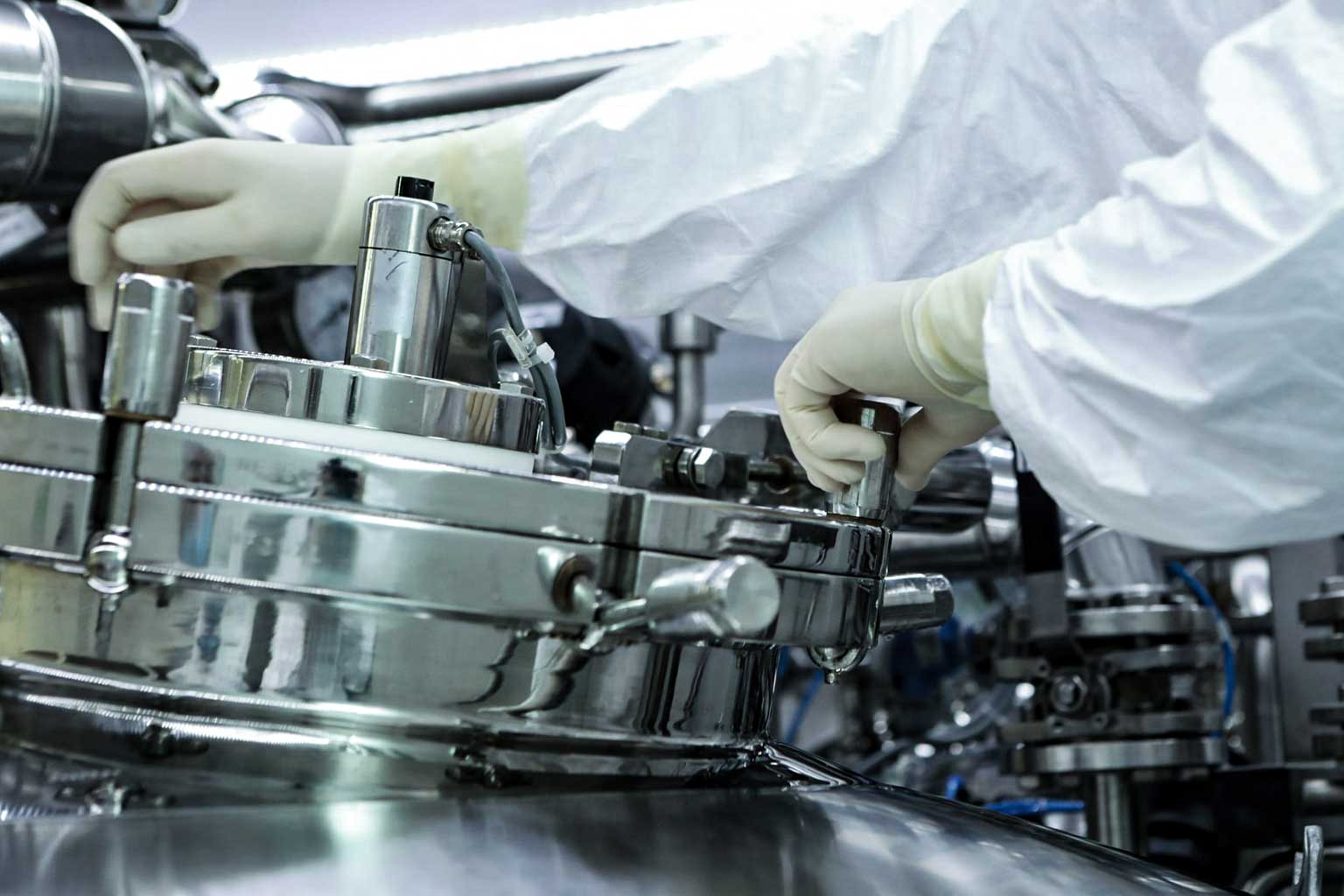What is plant extraction?
Plant extracts are based on plants as raw materials. According to the needs of the use of the final product extracted, through the physical and chemical extraction and separation process, one or more effective ingredients in the plant are obtained and concentrated without changing the effectiveness.

Plant extraction technology is a rigorous, meticulous, and complex process involving many aspects of knowledge and operating technology. Due to the different structures and physicochemical properties of the separated and purified active ingredients, the separation methods will be different. Even if the same type of active ingredient has different raw materials, the methods used are also very different. Therefore, there cannot be a unified approach.
Six stages of plant extraction
In general, the process of extracting effective ingredients from plant materials can be roughly divided into six stages:
- Selection and pretreatment of raw materials;
- Crushing of raw materials;
- Extracting effective ingredients from raw materials to make crude products;
- Purifying crude products ;
- Dry and preserve;
- Make finished products or preparations.
Not every extraction technology has the above six stages completely, and not every stage is completely separated, such as:
- Selective extraction, including separation and purification;
- Separation by precipitation includes concentration;
- The choice of separation and purification method and the order of the various methods also vary from material to material.
- Selective dissolution and precipitation are methods that are often used interchangeably throughout the entire separation process.
- Various column chromatography separation techniques are often placed in the later stages of purification. Only when the raw materials reach a certain purity can be crystallized to receive good results.
In short, no matter which stage and which operation technique is used, care must be taken that the molecules of the active ingredient are not destroyed during the operation to prevent the active ingredient from being denatured and degraded.
Classification and application
Classification
- The content of active ingredients, it can be divided into three types: effective monomer extract, standard extract, and ratio extract;
- Divided into glycosides, acids, polyphenols, polysaccharides, terpenes, flavonoids, alkaloids, etc. according to ingredients;
- According to the product form, it can be divided into vegetable oil, extract, powder, lens, etc.
- According to the purpose, plant extracts can be divided into natural pigment products, traditional Chinese medicine extract products, extract products, and concentrated products.
Application
The application range of plant extracts is now very wide. In addition to traditional Chinese medicine products, as people’s trust and dependence on natural products gradually increase, a large part of plant extracts have been used in health care products and food ingredients. In addition, plant extracts have been used in cosmetics and feed in recent years.
There are several classifications of some of the best-selling plant extract varieties in the world, such as:
- Rhodiola, ginkgo, ginseng extracts, etc. are used in the field of brain strengthening, nourishing, and preventing and treating Alzheimer’s disease;
- Green tea, Citrus aurantium, apple, bitter gourd polypeptide extracts, etc. are used for weight loss, lowering blood sugar, and preventing diabetes;
- Paclitaxel, tea polyphenols, theanine, bioflavonoids, such as lycopene, anthocyanins, etc. are used in the field of natural anti-cancer;
- Licorice, garlic, astragalus, and soybean extracts are used in the field of the human immune system.
Plant extract
Extraction is the process of drawing out the particular compounds in a plant or herb that are believed to be responsible for the medicinal properties. And that the extraction process can be complicated. While this complexity is what can be behind the benefits of natural medicines, it can make the consistency more difficult.
A standardized extract can help reduce this product variability. Standardization means that specified compounds (or ‘markers’) of an herbal ingredient are measured to a specified concentration or amount and the same rigorous manufacturing process and specification is adhered to for every single batch.
Alkaloids
Alkaloids are a class of complex nitrogen-containing organic compounds with special physiological activities and medical effects. For example, ephedra contains ephedrine for the treatment of asthma, and scopolamine contains scopolamine with antispasmodic and analgesic effects.
Glycosides
Glycosides are formed by combining sugar and non-sugar substances. The commonness of glycosides lies in the sugar part. Different types of aglycones have different physiological activities and various functions. For example, digitalis leaves contain cardiac glycosides, which have a cardiotonic effect, and ginseng contains ginsenosides with qi-tonifying, body fluid, and soothing effects.
Essential oil
Also known as volatile oil, it is an oily liquid with aroma and volatility. It is a mixture of multiple compounds. It has physiological activity and has many medical effects, such as relieving cough, relieving asthma, sweating, relieving the surface, expectorating, and repelling Wind, analgesia, antibacterial, etc.
Among the medicinal plants, the volatile oil content is richer in Platycladus orientalis, Magnolia Officinalis, Xinyi, camphor tree, cinnamon evodia, Angelica dahurica, Ligusticum chuanxiong, Angelica, peppermint and so on.
Tannin
A mixture of polyphenols. It exists in a variety of plants, especially in the Willow family, Fagaceae, Polygonaceae, Rosaceae, Leguminosae, Myrtaceae, and Rubiaceae plants. The insect gall medicinal material that grows on the medicinal plant Salvia officinalis is called gallnut, which contains gall tannin, which has astringent, antidiarrheal, and antiperspirant effects.
Other ingredients
Such as carbohydrates, amino acids, proteins, enzymes, organic acids, oils, waxes, resins, pigments, inorganic substances, etc., each has a special physiological function, many of which are clinically important drugs.
What are the four main types of extraction methods?
Liquid butane extraction
More commonly known as BHO extraction, this method is appealing because it has minimal impact
BHO is a method of extraction that uses the chemical solvent, butane, to pass over the bud and plant materials. The butane is then separated from the mixture using heat and sometimes a vacuum pump or vacuum oven. The finished product, at room temperature, is typically a golden, soft wax. When heated, it is melted into a clear yellowish amber oil. At its very purest, the substance is like thin, hard glass. The substance, usually golden amber, hardens into a thin layer that can be broken down by heat, resulting in butane hash oil.
The end products have been branded as BHO, Butane Hash Oil, Earwax, Honey Oil, and Shatter. These products are all comparable, and mainly differ in appearance due to the various melting and extraction points.
Supercritical co2 extraction
Molecules that reach a supercritical state have the properties of liquid and gas. This allows the carbon dioxide to reach into the small spaces of a plant-like gas and also dissolve and perform like a liquid solvent. Supercritical CO2 is easily manipulated and can bond to any other molecule and allows you to have total control over the procedure. CO2 is also recyclable, making this method the most environmentally friendly, and this method requires extreme temperatures that would degrade the plant during the extraction process. It also doesn’t leave any residual solvent.
CO2 Extraction vs. Butane Extraction
- CO2 is GRAS (Generally Regarded As Safe) by the FDA
- Extraction with CO2 is solvent free and does not use propane or butane solvents
- The spent plant material is solvent free
- BHO is highly flammable, while CO2 is not flammable and does not require explosion-proof equipment or buildings
- Extraction using CO2 minimizes thermal degradation of plant material and the oils extracted from the botanicals
BHO and CO2 will continue to be some of the top extraction methods of concentrates and botanical oils.
Ethanol extraction
Out of all the different methods of plant extraction, ethanol extraction has been quickly rising as the most favored method, as it is often recommended over other methods. While CO2 extraction has been popular for how friendly it is to the environment, it can be incredibly time-consuming in comparison to other methods. Ethanol extraction is as quick as butane but as safe and equally recyclable as CO2 extraction.
CO2 Extraction vs. Ethanol Extraction
Pros of ethanol extraction
The process is fast, making it a good choice for high-volume harvests
Ethanol extraction is more environmentally friendly than alternative extraction methods, as ethanol can be recovered and reused
Cons of ethanol extraction
Most authority having jurisdictions (AHJs) require a fully certified C1D1 or C1D2 hazardous material processing area
Engineering and build-out costs for an ethanol extraction lab can run from $750,000-$1.5 million
Design, engineering, and approval processes can take 12-18 months
Pros of supercritical CO2 extraction
While the process is more complicated, you’re able to extract a wider range of compounds
The CO2 extraction process allows you to pull terpenes from raw material
CO2 is non-toxic and non-flammable
Cons of supercritical CO2 extraction
It takes 6-10 CO2 extractors to deliver the same output as a single ethanol extractor
Used CO2 gas is released into the atmosphere, adding to greenhouse gas (GHG) emissions
Steam Distillation
Steam Distillation is the most popular method used to extract and isolate essential oils from plants for use in natural products. This happens when the steam vaporizes the plant material’s volatile compounds, which eventually go through a condensation and collection process.
STEAM DISTILLATION PROCESS
- A large container called a Still, which is usually made of stainless steel, containing the plant material has steam added to it.
- Through an inlet, steam is injected through the plant material containing the desired oils, releasing the plant’s aromatic molecules and turning them into vapor.
- The vaporized plant compounds travel to the condensation flask or the Condenser. Here, two separate pipes make it possible for hot water to exit and for cold water to enter the Condenser. This makes the vapor cool back into liquid form.
- The aromatic liquid by-product drops from the Condenser and collects inside a receptacle underneath it, which is called a Separator. Because water and oil do not mix, the essential oil floats on top of the water. From here, it is siphoned off. (Some essential oils are heavier than water, such as clove essential oil, so they are found at the bottom of the Separator.)
Common Terms
Grinding
This can be performed on any part of the plant, including the flower, stem, or root. Finely grinding the material creates more surface area for the solvent to interact with, leading to much more efficient removal of the chemicals of interest. Grinding is typically performed in a laboratory mill, utilizing a blade or grinding balls to reduce the plant into fine particles.
Extraction
This process places a solid in a solvent in order to remove soluble components. In most cases, high-proof ethanol is used for plant extraction. For cannabis, this process will remove Terpenes, THC, and CBD oil, leaving a mixture of the desired chemicals and solvent. The solvent will later be burned off using a rotary evaporator or a purge oven.
Winterization
This process removes fats, plant lipids, or any kind of wax from the extract. Achieved by adding ethanol to the extract using a simple filtration step requiring only a vacuum pump, Büchner funnel, filter paper, and vacuum flask. After the material has been filtered, a solution of solvent and extract remains. Use a rotary evaporator to boil off the ethanol, leaving a pure extract that can be dried in a lab oven or readily infused.
Decarboxylation
This process is necessary to activate the psychoactive effects of the cannabinoids present in the cannabis plant or oil. Decarboxylation has a few different meanings, however, in this instance, it means the replacement of a carboxyl group (-COOH) with a hydrogen atom and releasing carbon dioxide creating THC from THCA. This is achieved by heating the extract or plant material.
Distillation/Isolation/Final Processing
This process is not required for infusion or oil use, distillation remains an important step in the research process. By heating the extract at different temperatures, each chemical of the plant extract can be isolated. This is useful to recover CBD oil without THC present and in for any research process where a scientist is looking to study a specific compound of the plant.

